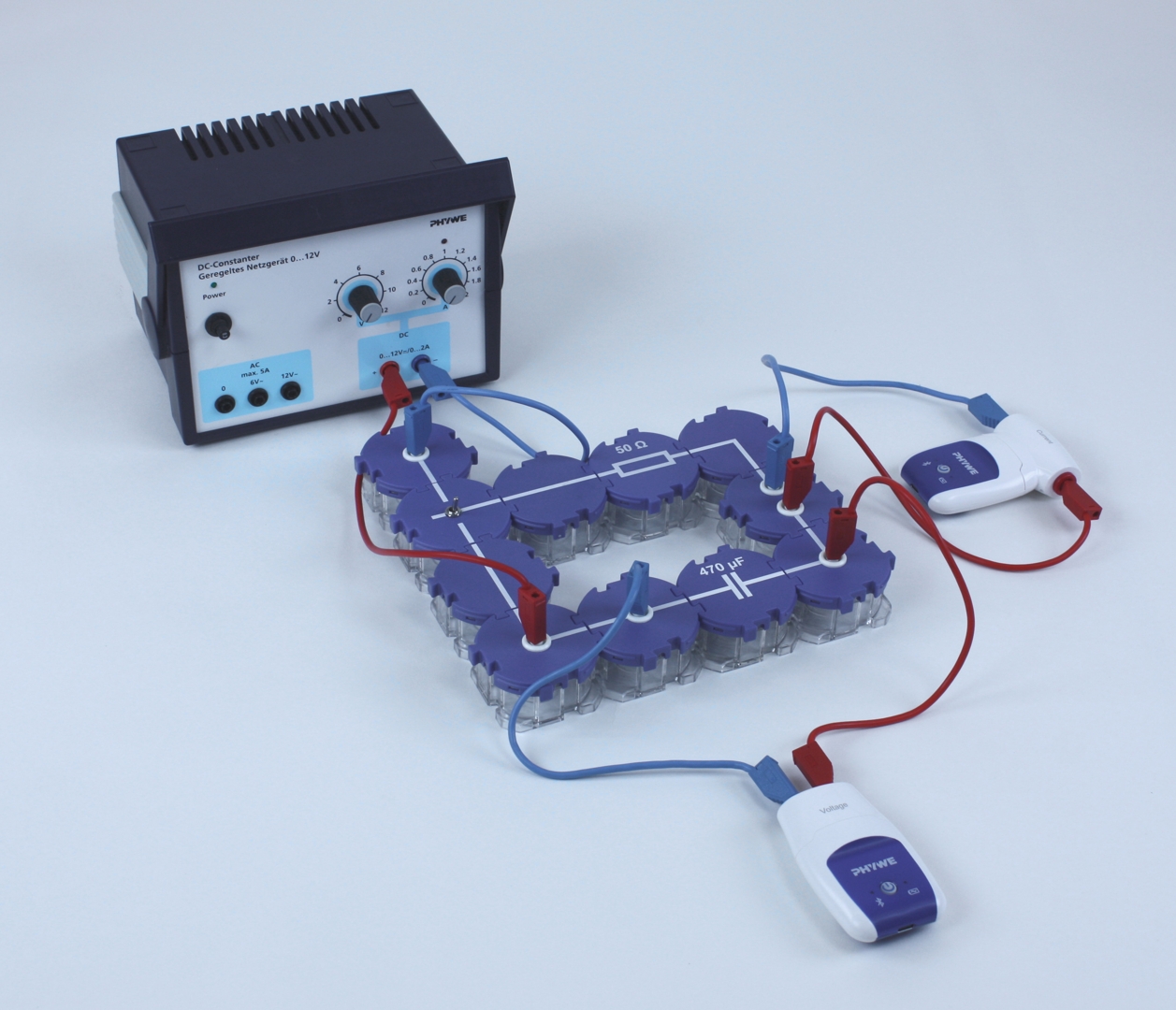Principle
Capacitors are electronic components that usually consist of two conductive surfaces separated by an insulating material. With its help, charges and thus energy can be stored in the form of an electric field and then released again. The greater the capacitance C of the capacitor, the more charges Q can be stored at a given voltage. The following applies: U = Q/C.
Benefits
- Particularly comprehensible and didactically prepared description of the experiment (reference to everyday life, etc.) incl. protocol questions.
- Teach in a future-oriented way: Integration into digital science lessons with tablets or smartphones.
- Increased motivation among students through use of the intuitive measureAPP.
- Increased media literacy.
- No additional cable connections between the modules necessary - clearer and faster set-up.
- contact safety due to puzzle-like interlocking building blocks.
- Hard gold-plated, corrosion-resistant contacts
- Double learning success: electrical circuit diagram visible on the upper side and real components on the lower side
Tasks
Investigate the voltage and current characteristics of a capacitor during charging and discharging. Investigate what determines the speed at which these processes occur.
Learning Objectives
In this experiment, the charging and discharging process of a capacitor is to be understood.

